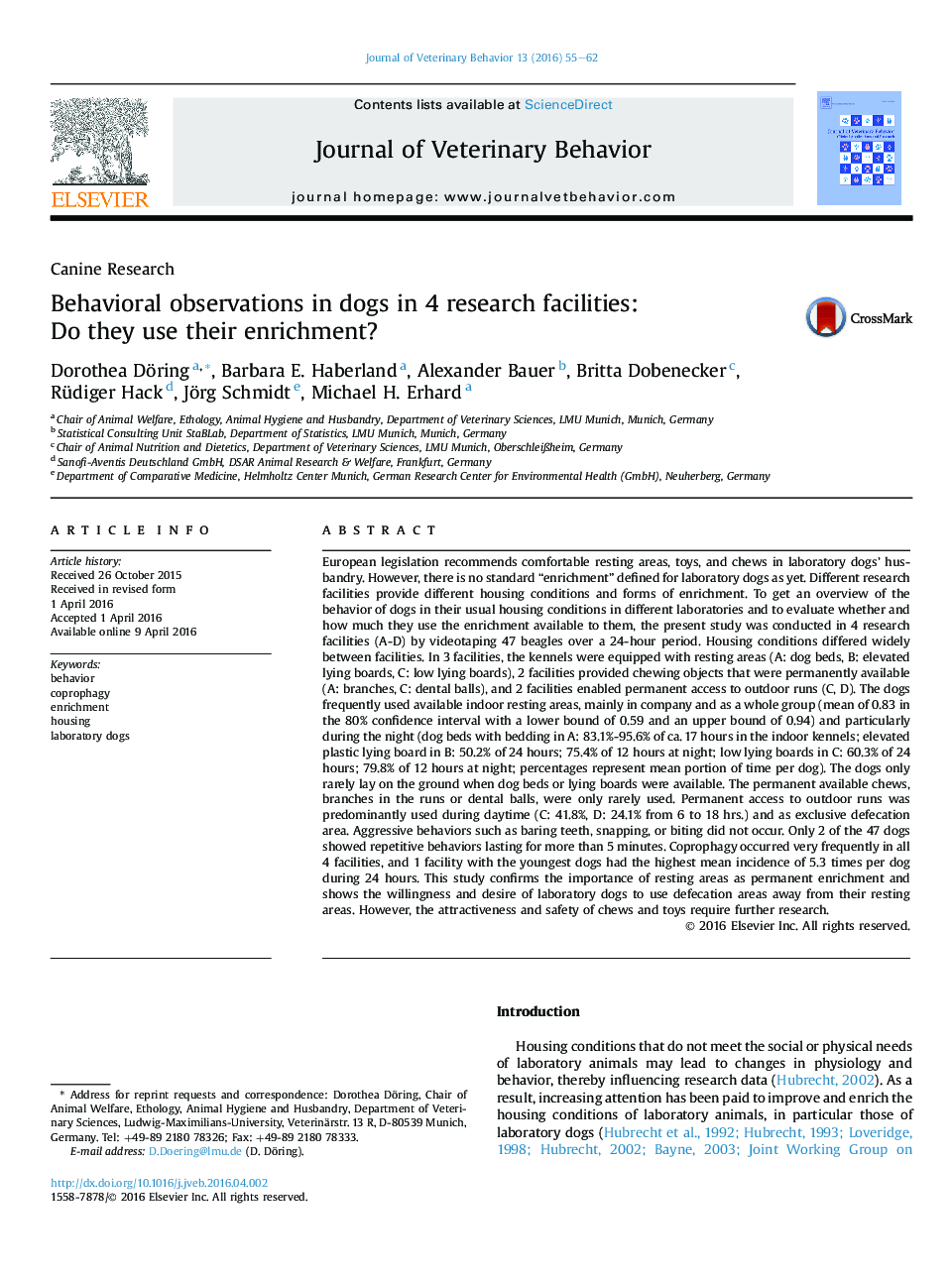| کد مقاله | کد نشریه | سال انتشار | مقاله انگلیسی | نسخه تمام متن |
|---|---|---|---|---|
| 2398633 | 1551603 | 2016 | 8 صفحه PDF | دانلود رایگان |
European legislation recommends comfortable resting areas, toys, and chews in laboratory dogs' husbandry. However, there is no standard “enrichment” defined for laboratory dogs as yet. Different research facilities provide different housing conditions and forms of enrichment. To get an overview of the behavior of dogs in their usual housing conditions in different laboratories and to evaluate whether and how much they use the enrichment available to them, the present study was conducted in 4 research facilities (A-D) by videotaping 47 beagles over a 24-hour period. Housing conditions differed widely between facilities. In 3 facilities, the kennels were equipped with resting areas (A: dog beds, B: elevated lying boards, C: low lying boards), 2 facilities provided chewing objects that were permanently available (A: branches, C: dental balls), and 2 facilities enabled permanent access to outdoor runs (C, D). The dogs frequently used available indoor resting areas, mainly in company and as a whole group (mean of 0.83 in the 80% confidence interval with a lower bound of 0.59 and an upper bound of 0.94) and particularly during the night (dog beds with bedding in A: 83.1%-95.6% of ca. 17 hours in the indoor kennels; elevated plastic lying board in B: 50.2% of 24 hours; 75.4% of 12 hours at night; low lying boards in C: 60.3% of 24 hours; 79.8% of 12 hours at night; percentages represent mean portion of time per dog). The dogs only rarely lay on the ground when dog beds or lying boards were available. The permanent available chews, branches in the runs or dental balls, were only rarely used. Permanent access to outdoor runs was predominantly used during daytime (C: 41.8%, D: 24.1% from 6 to 18 hrs.) and as exclusive defecation area. Aggressive behaviors such as baring teeth, snapping, or biting did not occur. Only 2 of the 47 dogs showed repetitive behaviors lasting for more than 5 minutes. Coprophagy occurred very frequently in all 4 facilities, and 1 facility with the youngest dogs had the highest mean incidence of 5.3 times per dog during 24 hours. This study confirms the importance of resting areas as permanent enrichment and shows the willingness and desire of laboratory dogs to use defecation areas away from their resting areas. However, the attractiveness and safety of chews and toys require further research.
Journal: Journal of Veterinary Behavior: Clinical Applications and Research - Volume 13, May–June 2016, Pages 55–62
